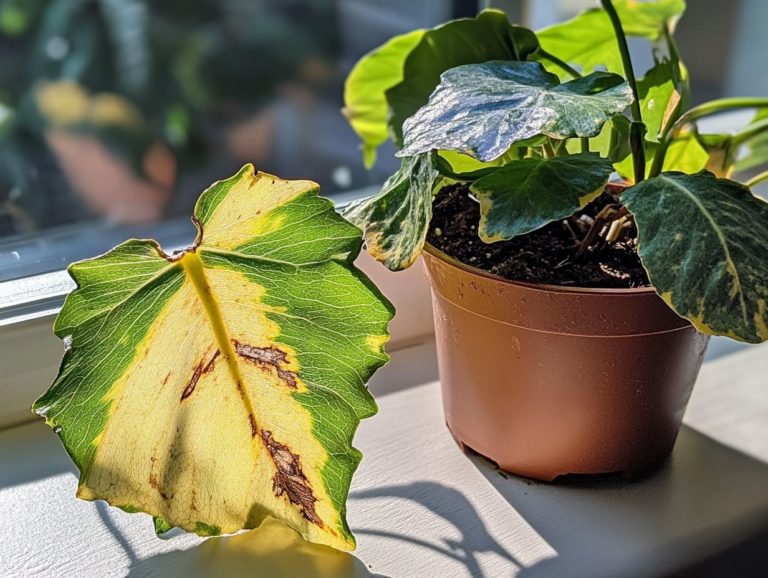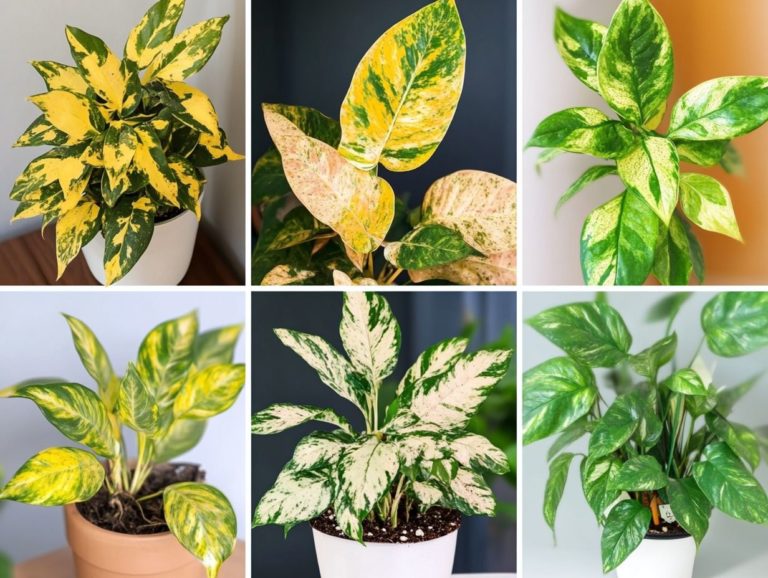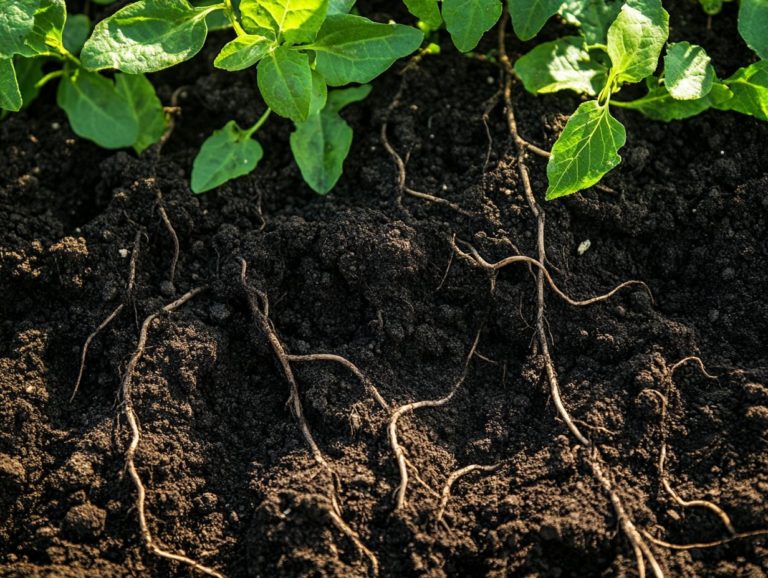Identifying and Treating Powdery Mildew
Powdery mildew is a pervasive fungal infection that can threaten both gardens and indoor plants. Recognizing its signs early is essential for effective management.
This article delves into identifying powdery mildew, guiding you through everything from subtle symptoms to more pronounced indicators. It highlights the underlying causes of this fungus, including environmental triggers and specific plant vulnerabilities.
Explore practical treatment options and preventive measures to keep your plants healthy and vibrant.
Contents
- Key Takeaways:
- Identifying Powdery Mildew
- Causes of Powdery Mildew
- Treating Powdery Mildew
- Preventing Powdery Mildew
- Frequently Asked Questions
- What is powdery mildew and how can I identify it?
- What can I do to prevent powdery mildew?
- What are the best treatments for powdery mildew?
- What causes powdery mildew to develop on plants?
- Can powdery mildew be harmful to my plants?
- How can I treat powdery mildew on my plants?
- Can I prevent powdery mildew from developing on my plants?
- Is powdery mildew harmful to humans?
Key Takeaways:
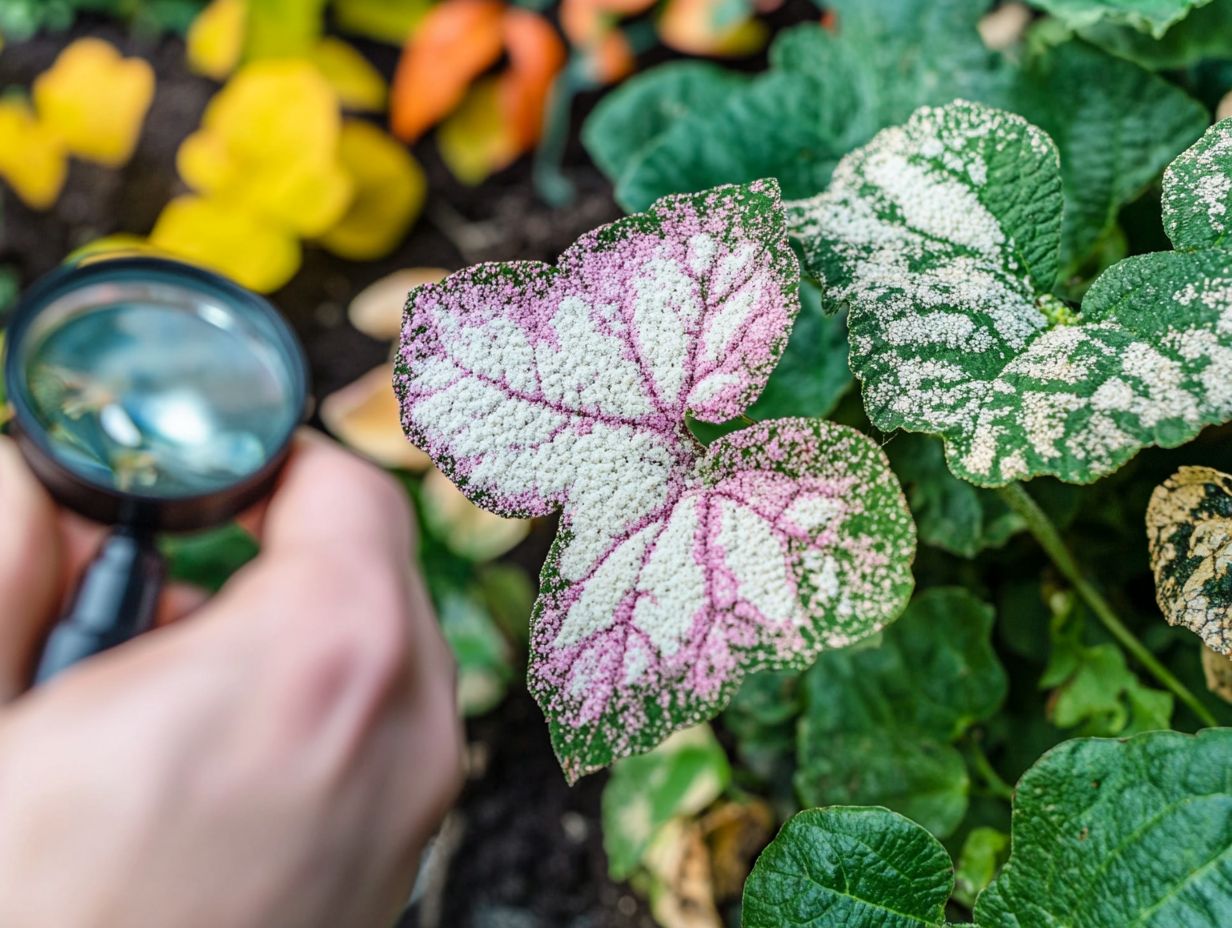
- Powdery mildew is a common fungal disease that affects plants, causing a white powdery growth on leaves and stems.
- Signs of powdery mildew include white or gray powdery spots on leaves, stunted growth, and distorted plant structures.
- High humidity and poor air circulation make plants more susceptible, but proper care and hygiene practices can treat and prevent it.
What is Powdery Mildew?
Powdery mildew is a common fungal disease that can wreak havoc on various plants, including tomatoes, cucumbers, zucchinis, and roses. You can recognize it by the white or grayish powdery spots that appear on infected leaves and stems, which can compromise the health of your plants and their ability to thrive.
You need to understand powdery mildew! It spreads rapidly through fungal spores in warm, humid conditions, leading to significant damage if you don t act swiftly. This disease weakens plant defenses, making it a formidable adversary for agricultural productivity and ornamental gardening.
It thrives in environments with poor air circulation, high humidity, and moderate temperatures, often finding a welcoming home in crowded planting scenarios. Symptoms escalate quickly, resulting not only in unsightly damage but also hampering the way plants make food from sunlight, which ultimately affects growth and yields.
To combat this pervasive threat, implementing preventive measures like maintaining proper spacing and ensuring adequate sunlight is crucial. These strategies will help mitigate the impact of powdery mildew, allowing your plants to develop healthily and thrive.
Identifying Powdery Mildew
Recognizing powdery mildew is crucial for maintaining a thriving garden. By detecting it early, you can effectively prevent its spread and protect your vulnerable plants, including beans, pumpkins, and flowering varieties.
Signs and Symptoms
The signs and symptoms of powdery mildew are unmistakable. You ll notice white or grayish patches appearing on the surface of infected leaves, which can lead to stunted growth and compromised plant health.
As the infection spreads, those patches can quickly take over, turning your once-lush foliage into unsightly, struggling plants that find it hard to photosynthesize effectively. This decline can also trigger yellowing leaves and premature leaf drop, leaving your stressed plants more susceptible to secondary infections and pests.
Stay vigilant and watch for additional signs, like distorted leaf shapes or a drop in flowering. These symptoms often point to a serious decline in overall vigor.
By properly identifying the issue and taking timely action, you can prevent further deterioration, ensuring that your garden remains vibrant and thriving.
Causes of Powdery Mildew
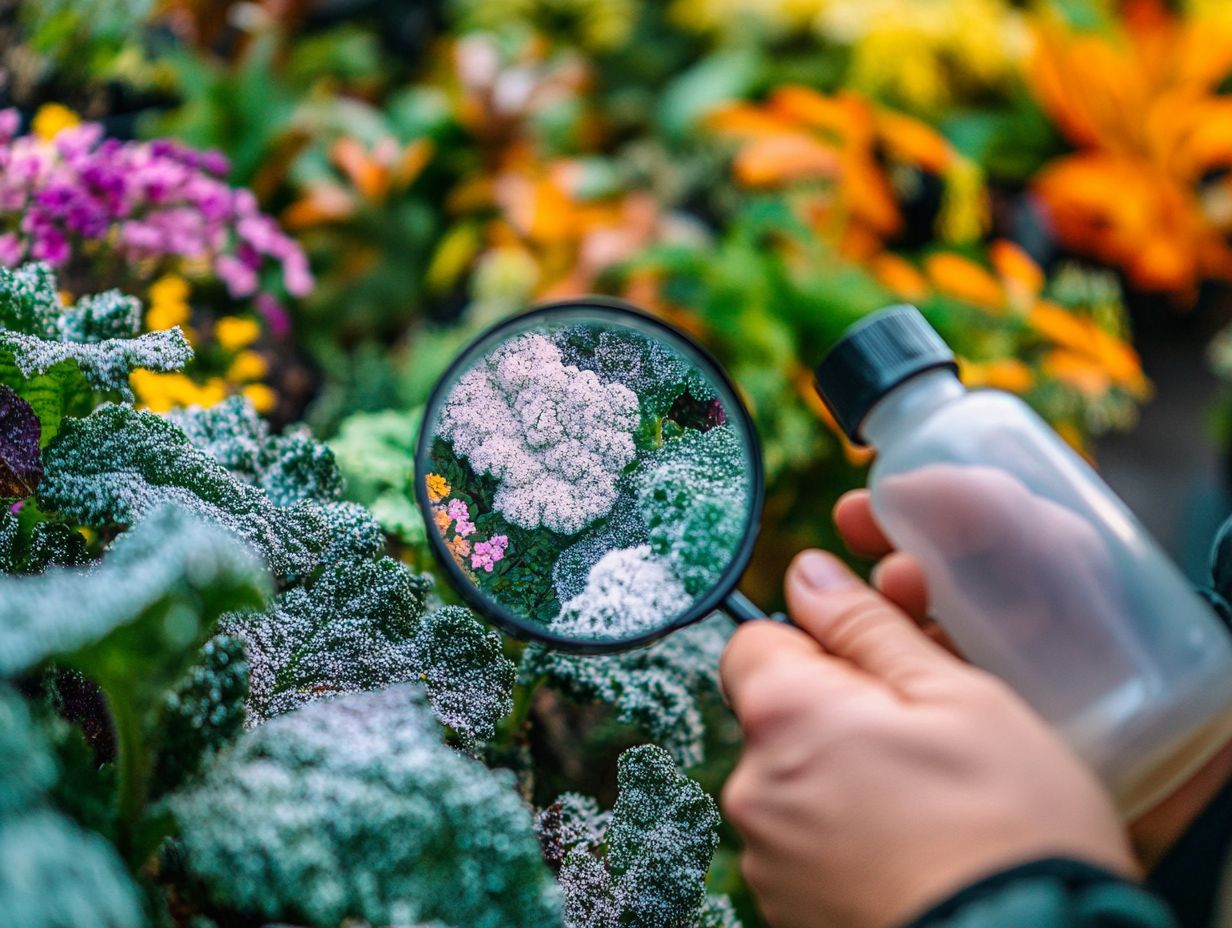
The causes of powdery mildew are intricately tied to environmental factors. High humidity, poor airflow, and certain plants like cucumbers and roses create ideal conditions for powdery mildew to thrive.
Stay vigilant and protect your plants today!
Environmental Factors and Plant Vulnerability
Environmental factors, like high humidity and low air circulation, significantly influence a plant’s susceptibility to powdery mildew. This dictates which types of plants are more prone to this pesky fungal disease.
When plants are crowded together in damp conditions, stagnant air creates a perfect breeding ground for this pathogen. It s crucial for you, as a gardener or grower, to keep a vigilant eye on these conditions.
Certain cultivars, such as ‘Powdery Mildew Resistant Petunia’ and ‘Deer Resistant Phlox’, have been specifically bred to thrive in such environments without falling victim to infestations. By choosing these resilient varieties and ensuring ample spacing between your plants, you can encourage better air circulation and maintain ideal humidity levels.
This approach helps protect plant health and maximize productivity.
Treating Powdery Mildew
Effectively treating powdery mildew requires a range of options, including both organic methods and chemical solutions. This not only helps restore the health of your infected plants but also serves as a preventive measure against future outbreaks.
Effective Treatment Methods
Among the most effective methods for powdery mildew are home remedies like baking soda and milk, alongside commercially available solutions such as potassium bicarbonate. Each of these treatments offers unique advantages tailored to your specific gardening needs.
For instance, mixing baking soda with water and a few drops of liquid soap creates a spray that effectively neutralizes mildew spores when applied directly to affected areas. Meanwhile, milk contains beneficial enzymes that combat the fungus and promote healthy plant growth thanks to its nutrient content.
If you choose commercial options like potassium bicarbonate, you alter the pH on the plant surface, creating an environment that is inhospitable to mildew. These organic treatments provide immediate relief and contribute to long-term disease prevention, ensuring your plants remain healthier and yield better results without relying on harsh chemicals.
Preventing Powdery Mildew
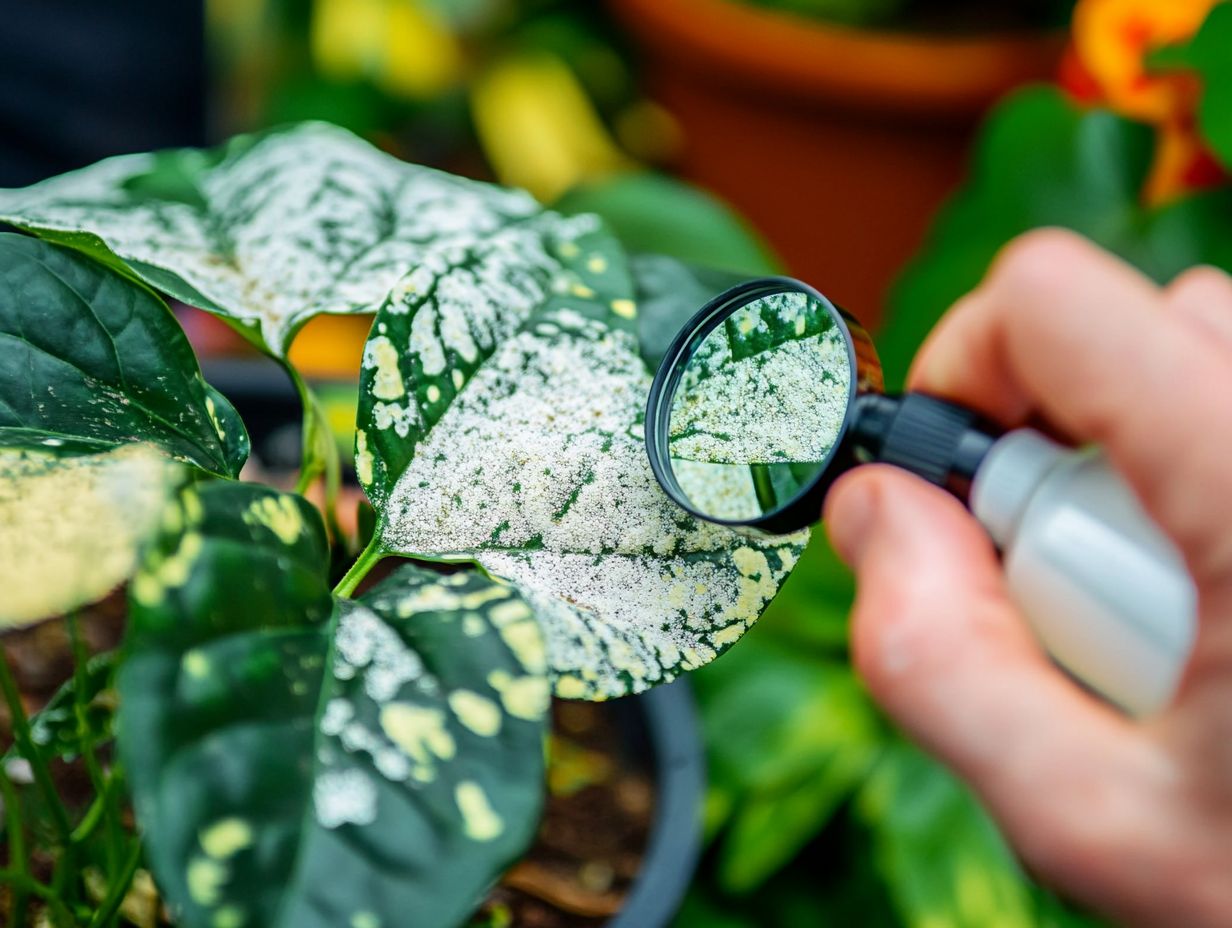
Preventing powdery mildew is essential for preserving the vitality of your garden. This involves employing a range of disease prevention strategies, including optimizing water drainage and ensuring sufficient air circulation around susceptible plants.
Preventive Measures for Plants and Gardens
Your preventive measures should focus on reducing humidity levels, enhancing air circulation, and embracing organic gardening techniques to create an unwelcoming environment for powdery mildew.
Strategically spacing your plants encourages airflow between them, significantly reducing moisture accumulation that fosters fungal growth. Choosing well-drained locations bathed in direct sunlight supports healthy plant growth and further discourages the onset of powdery mildew.
Incorporating organic gardening techniques like using neem oil or baking soda solutions provides added protection while promoting a healthy ecosystem. Regularly pruning leaves and promptly removing any infected foliage maintain a vigorous garden, ensuring your plants flourish without the continual threat of fungus.
Frequently Asked Questions
What is powdery mildew and how can I identify it?
Powdery mildew is a common fungal disease that affects various plants. It appears as a white or gray powdery substance on the leaves, stems, and buds. You can easily identify it by its powdery appearance and its distinctive color.
What can I do to prevent powdery mildew?
To prevent powdery mildew, ensure proper spacing between plants, improve air circulation, and avoid excessive watering at night.
What are the best treatments for powdery mildew?
The best treatments include organic options like baking soda, milk, and neem oil, as well as commercial products like potassium bicarbonate.
Share your success stories below!
What causes powdery mildew to develop on plants?
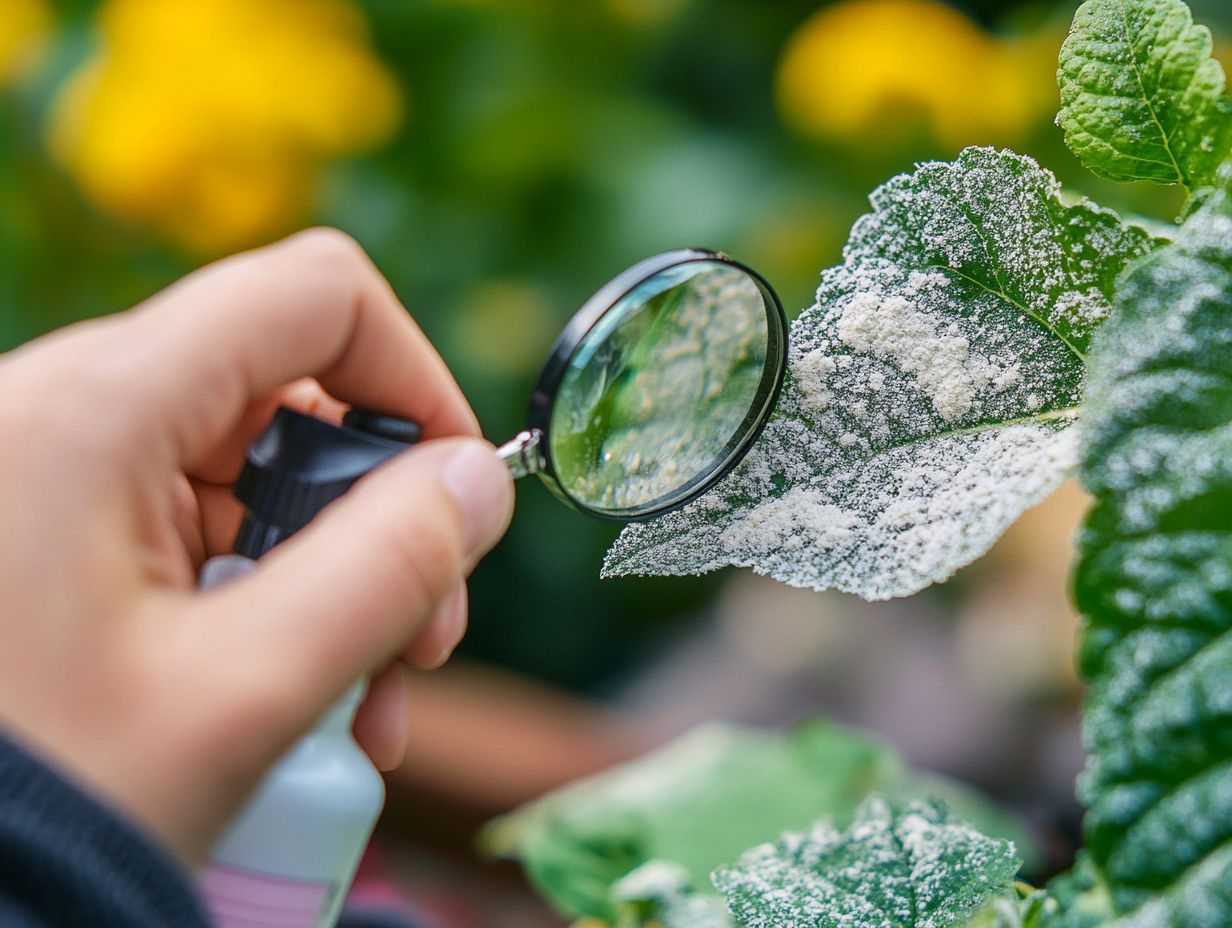
Powdery mildew is caused by fungal spores that are spread through the air, water, or insects. It thrives in moist and mild conditions, making it prevalent in the spring and fall.
Crowded plants, poor air circulation, and lack of sunlight can also contribute to its development.
Can powdery mildew be harmful to my plants?
While it is not usually fatal to plants, powdery mildew can weaken them and make them more susceptible to other diseases. It can also cause stunted growth and reduce the plant’s ability to produce flowers or fruit.
It is important to treat powdery mildew to prevent further damage to your plants.
How can I treat powdery mildew on my plants?
Treating powdery mildew can be straightforward and effective! Here are some top methods to keep your plants healthy:
- Use fungicides, which are chemical solutions that kill fungi.
- Prune affected areas to improve air circulation.
- Remove infected leaves and debris.
- Water plants at the base and avoid getting the foliage wet.
Can I prevent powdery mildew from developing on my plants?
While powdery mildew can be challenging to prevent, some steps can reduce the risk:
- Space out plants to allow better air circulation.
- Avoid overhead watering.
- Regularly inspect plants for signs of disease.
- Choose disease-resistant plant varieties to help prevent powdery mildew.
Is powdery mildew harmful to humans?
Powdery mildew is a plant disease and does not directly affect humans. However, the spores can cause respiratory irritation in some people.
It is best to handle infected plants with caution and wear protective gear when necessary.


